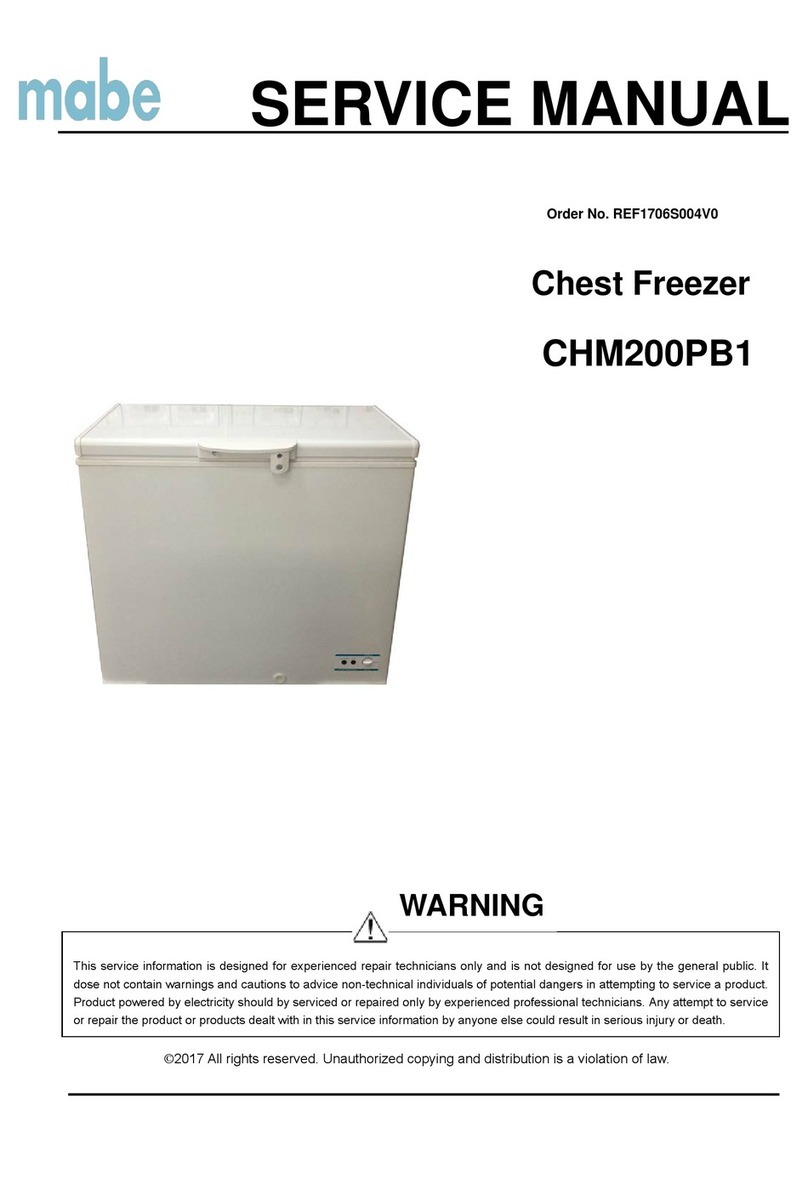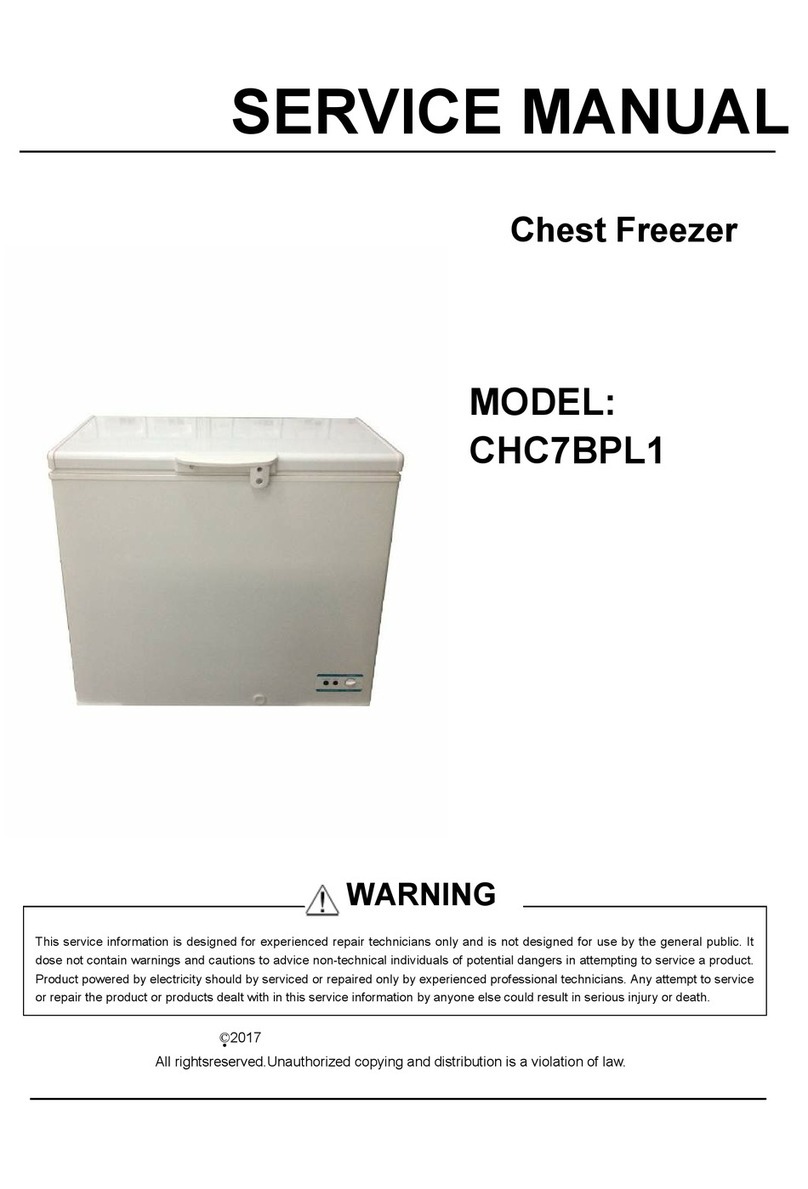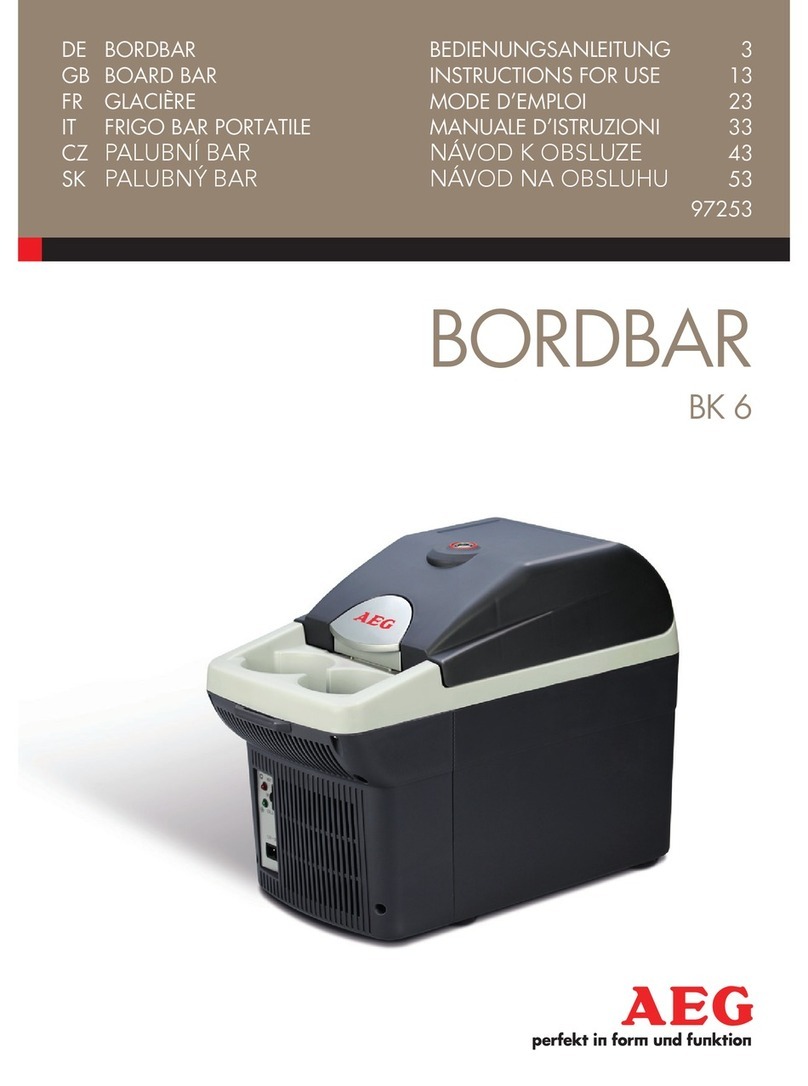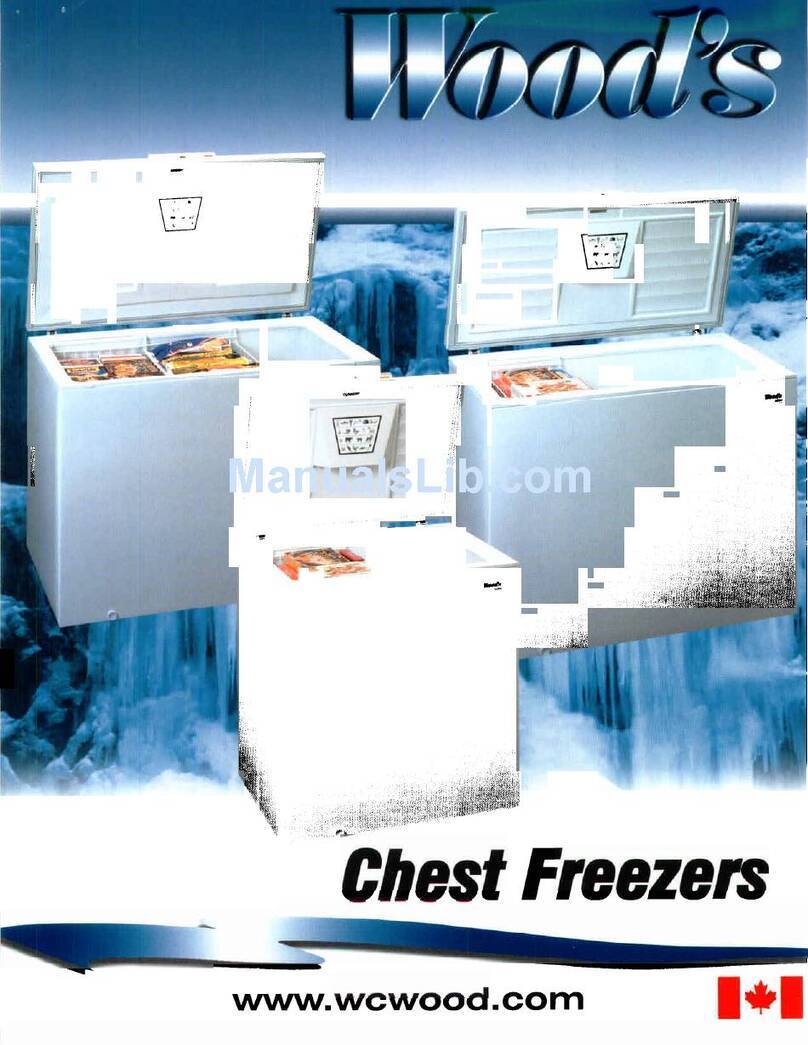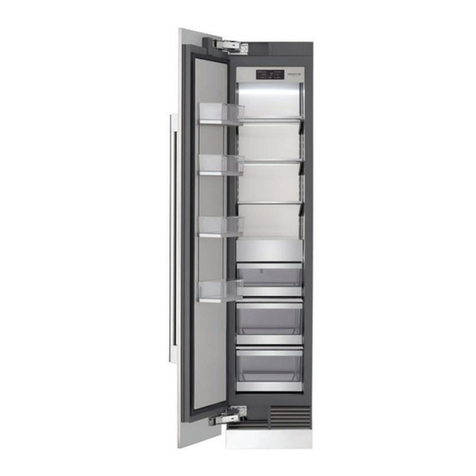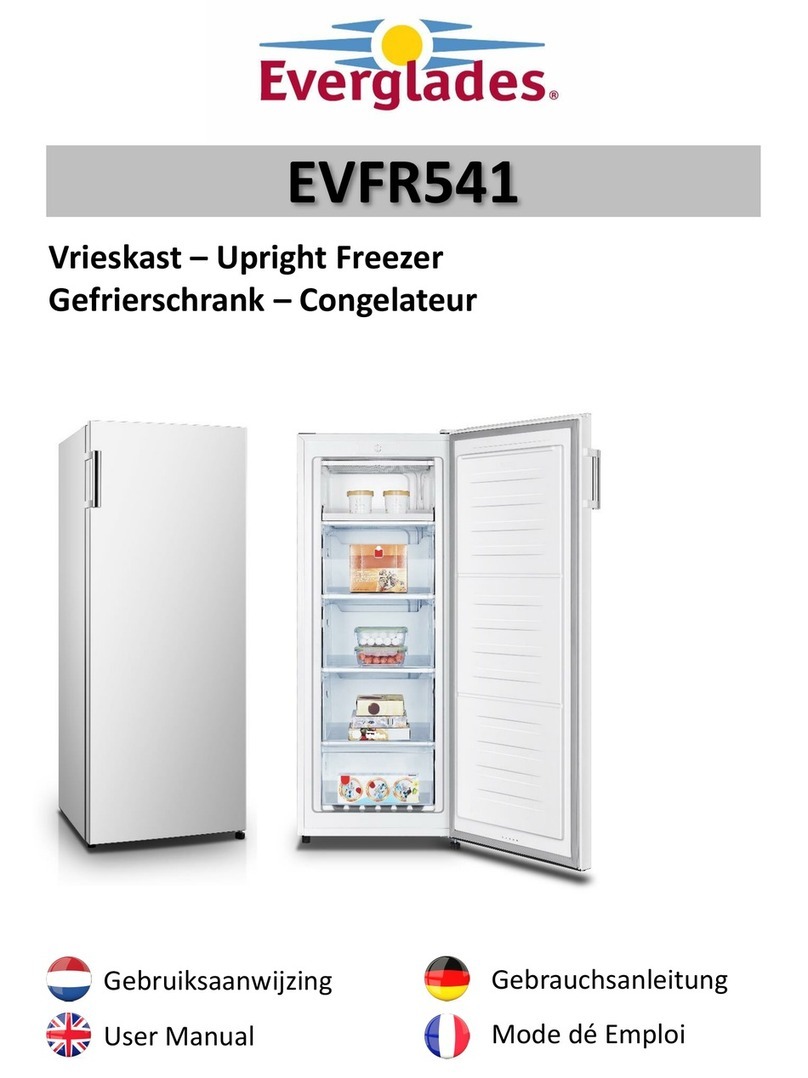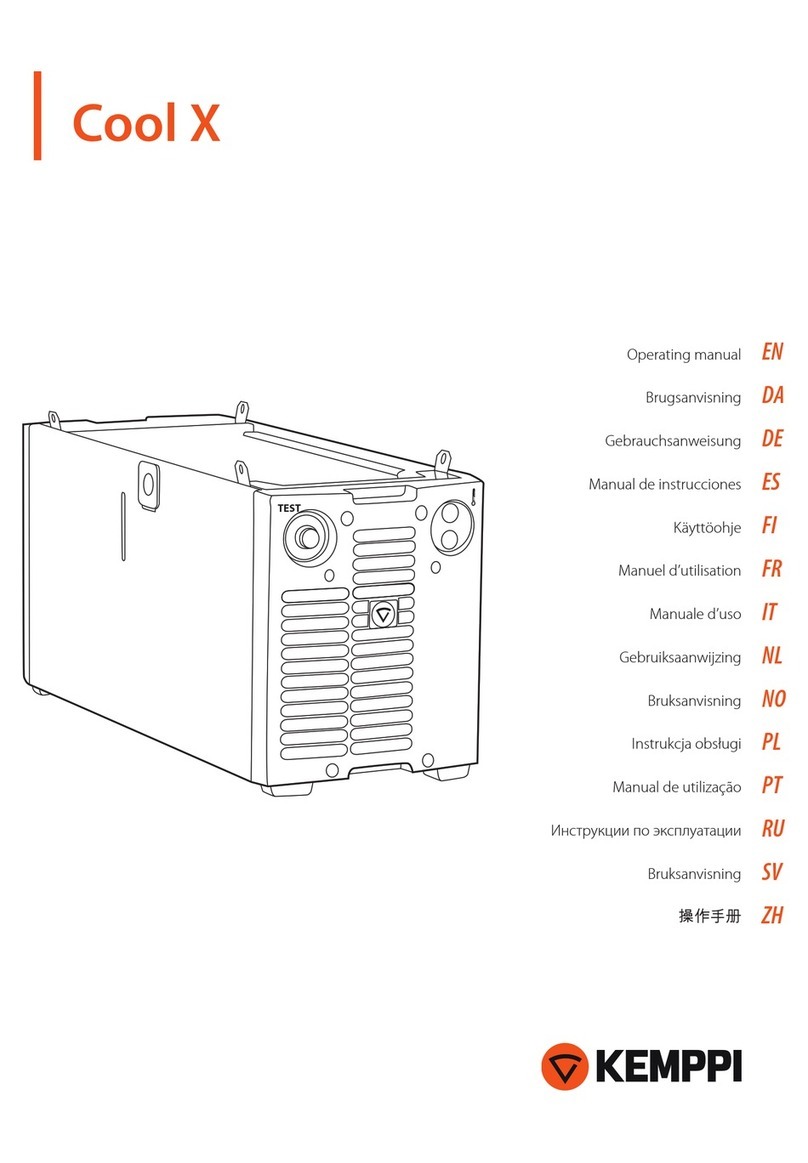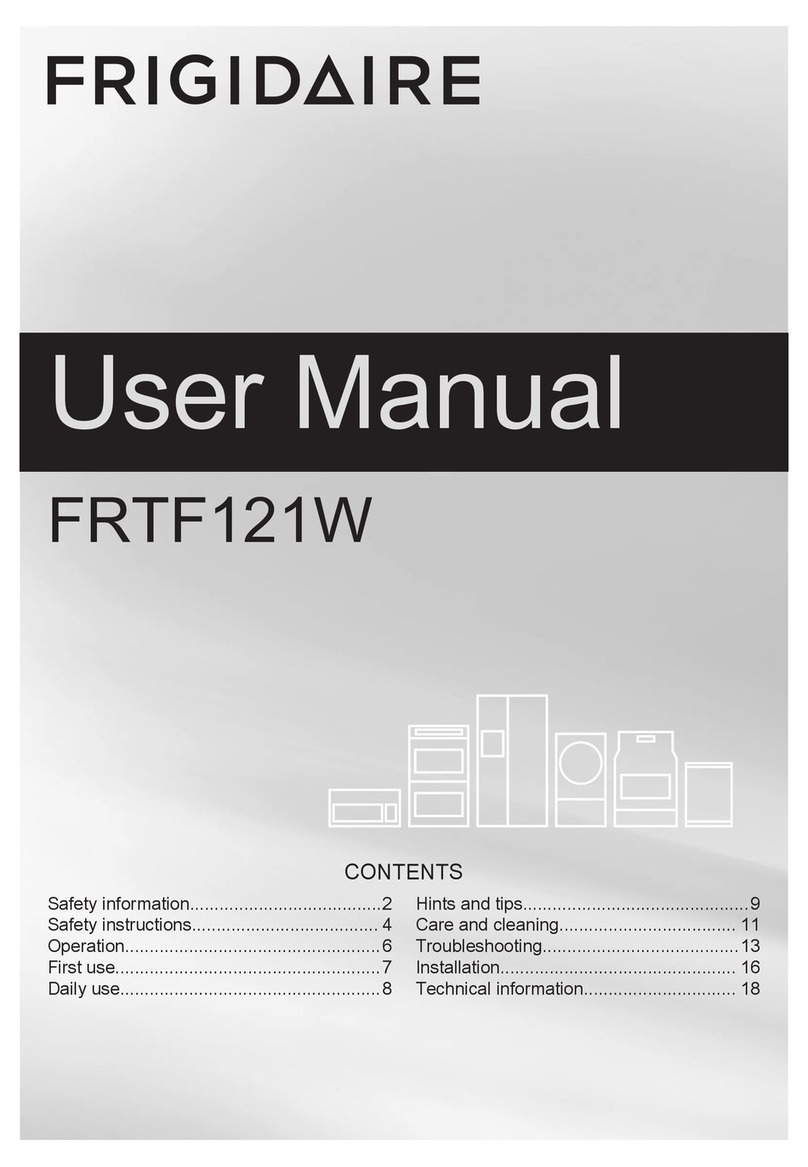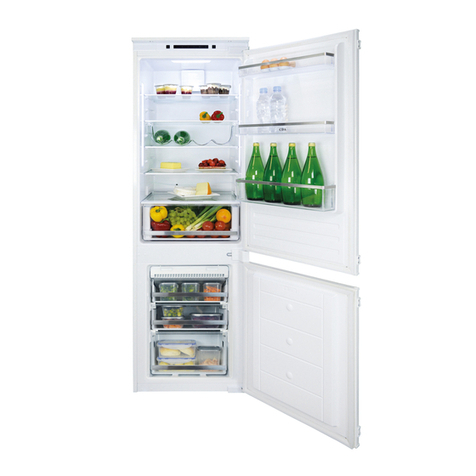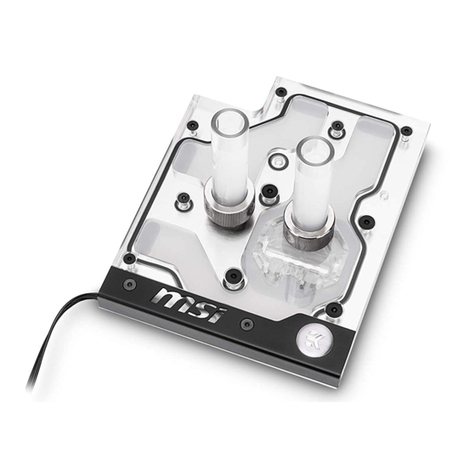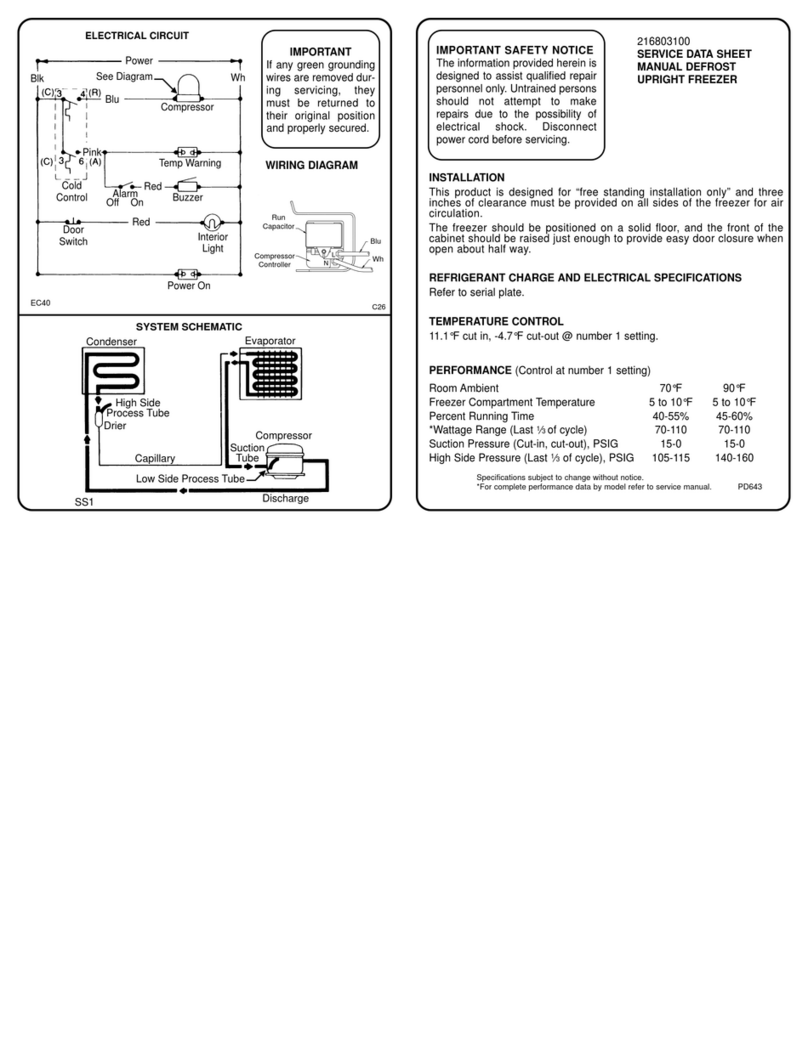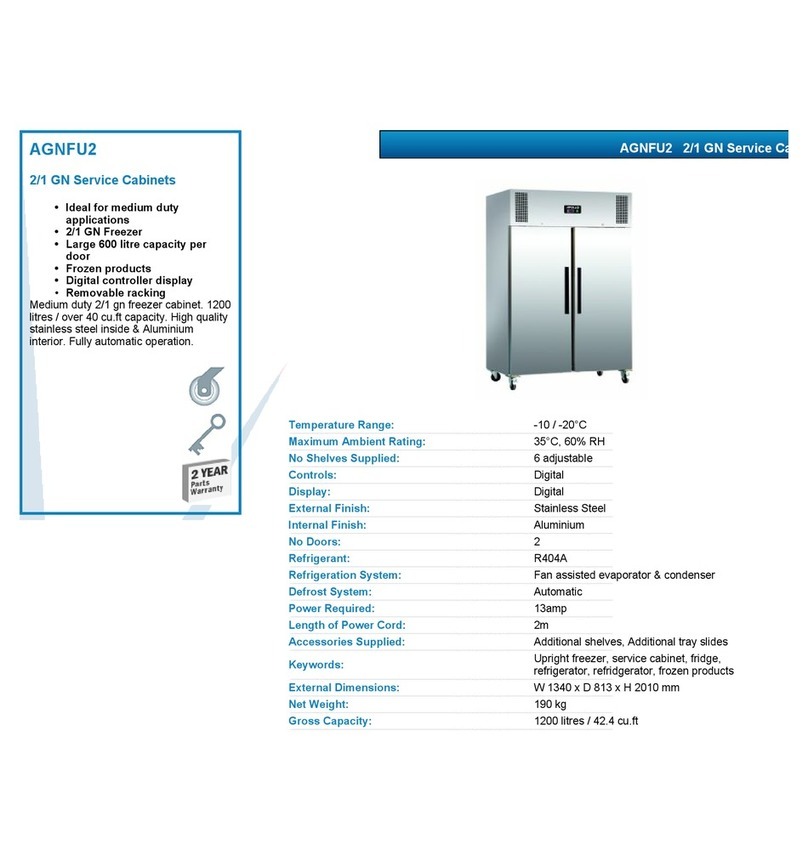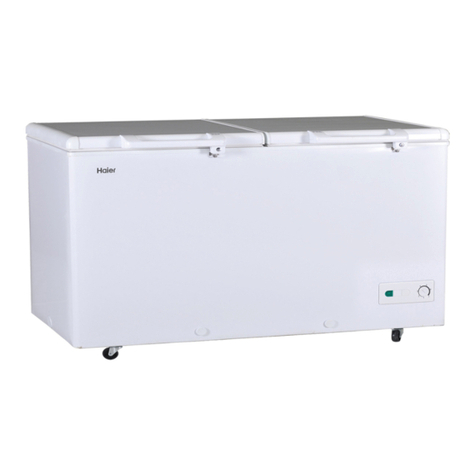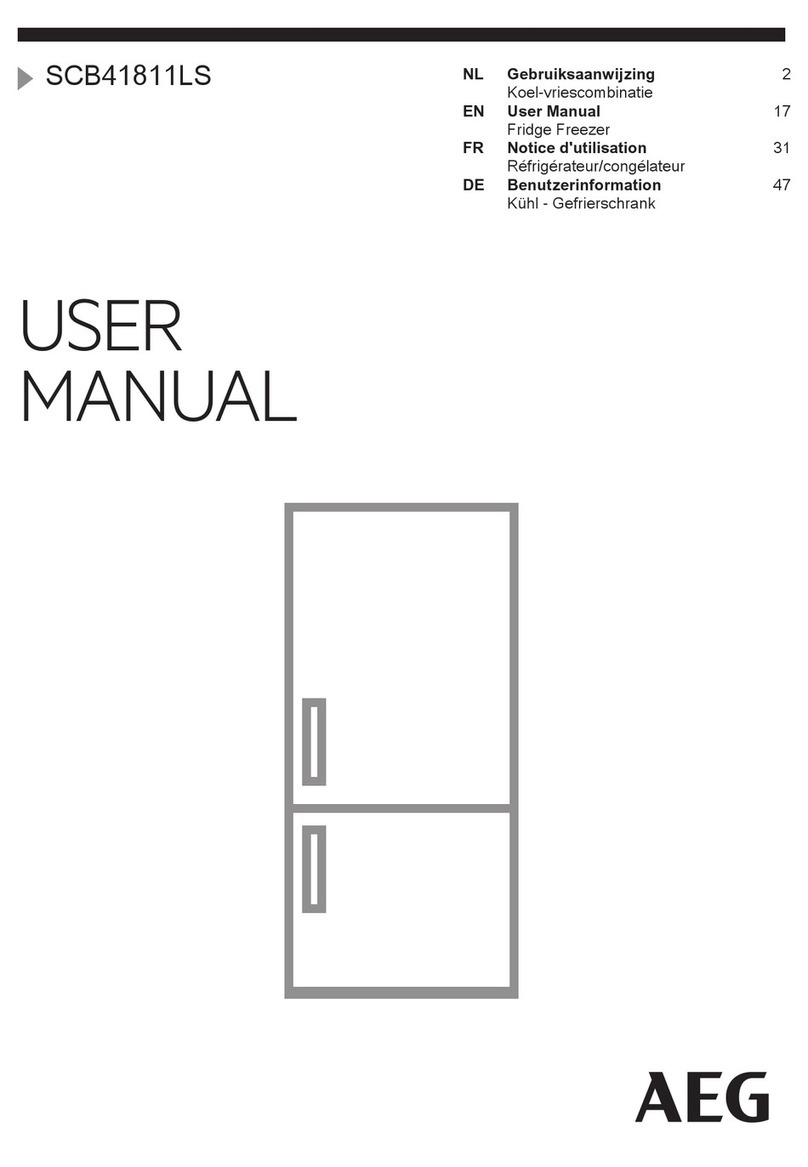mabe FMM300UESX0 User manual

model
FMM300UESX0

2

*
*
Optional. Not provided for this model.
*

4important safety instructions
•
•
Do not use electrical appliances such as a hair dryer or heater to defrost
your Fridge/Freezer.
Fridge/Freezer.
•
•
lollies can cause “Frost/Freeze burns”. If consumed straight from the
•
•
Do not remove items from the Fridge/Freezer compartment if your hands
are damp/wet, as this could cause skin abrasions or “Frost/Freezer burns”.
Bottles and cans must not be placed in the Freezer compartment as they
Manufacturer’s recommended storage times should be adhered to. Refer
to relevant instructions.
can burst when the contents freeze.
• Do not allow children to tamper with the controls or play with the
Fridge/Freezer.
The Freezer is heavy. Care should be taken when moving it.
in any way.
•
• If the power cable is damaged, it must be replaced by the manufacturer,
• This appliance can be used by children aged from 8 years and above and
persons with reduced physical, sensory or mental capabilities or lack of
experience and knowledge if they have been given supervision or
instruction concerning use of the appliance in a safe way and understand
the hazards involved.
• Children shall not play with the appliance. Cleaning and user maintenance
shall not be made by children without supervision.
• This appliance is intended to be used in household and similar applica-
tions such as:
- farm houses and by clients in hotels, motels and other residential
type environments;
- bed and breakfast type environments;
- catering and similar non-retail applications.
• Keep ventilation openings, in the appliance enclosure or in the built-in
structure, clear of obstruction.
•Do not use mechanical devices or other means to accelerate the defrosting
process, other than those recommended by the manufacturer.
• Do not damage the refrigerant circuit.
• Do not use electrical appliances inside the food storage compartments of
the appliance, unless they are of type recommended by the manufacturer.
•
propellant in this appliance.

installation
operation instructions
Avoid locating your Fridge/Freezer near a heat source, eg, cooker, boiler or
Aradiator. lso avoid direct sunlight in out-buildings or sun lounges.
If you are placing your Frige/Freezer in an out-building such as a garage or
ensuannex re that the Fridge/Freezer is placed above the damp course
otherwise denscon ation will occur on the Freezer cabine
Never place the Fridge/
furniture
t.
when your Freezer is working, the grille at the back may become
hot and the sides warm.
It must therefore be installed so that the back of the Fridge/ Freezer has
at least 9 cm (31/2”) of free space and the sides have 2 cm (3/4”).
Do not drape the Freezer with any covering.
Wipe the inside of the Fridge/ Freezer with a weak solution of bicarbonate
of soda. Then rinse with warm water using a damp sponge or cloth. Wash
the baskets and shelves in warm soapy water and dry completely before
replacing in the Fridge/ Freezer. The external parts of the Freezer can be
cleaned with wax polish. See page 11 for more details on cleaning.
location
When selecting a position for your Fridge/Freezer you should make sure the
temperature of between 16 C y 43 C.
5
If the Fridge/Freezer is not level, the door and magnetic seal alignment
the front by turning them.
leveling the freezer

6
temperature control panel
1. indicator lights.
start
CAUTION:
• BEFORE PLUGGING IN
YOU MUST CHECK THAT YOU HAVE A SOCKET WHICH
IS COMPATIBLE WITH THE PLUG SUPPLIED WITH THE
FRIDGE/ FREEZER. IF NOT SEE THE SECTION CALLED
ELECTRICAL INFORMATION ON PAGE 12.
• BEFORE SWITCHING ON!
DO NOT SWITCH ON UNTIL FOUR HOURS AFTER
MOVING THE FRIDGE/FREEZER.
Before storing foods in your Fridge/ Freezer, turn the Fridge/ Freezer on
and wait for 24 hours, to make sure it is working properly and to allow
the Fridge/Freezer to fail to the correct temperature.
Power: When the appliance is connected to the power supply and
thermostat knob is not in position “ OFF ”, the power indicator light
will illuminate in green.
Alert: When the freezer temperature is warmer 5°C than the set tempera-
light will illuminate in red. When the freezer temperature reaches
the set temperature, the light will go out automatically. Please
check the frozen foods (if any) when the alert indicator light
illuminates.
Run: When the power is on and the compressor is running, the run
indicator light will illuminate in yellow.
power
(green)
alert
(red)
run
(yellow)
temperature
control
min
max
run
!
!

7
in use
tips for keeping food perfect on the fridge
2. Temperature Control
The thermostat control knob situated in the control panel regulates the
head screwdriver).
The range of the temperature control is from position “ MIN ”(warmest) to “
MAX ”(coldest). For normal working temperature it is recommended to
adjust the thermostat control to the position from “ MIN “ to “ MAX “, after a
appliance from the mains supply. To do this you must remove the mains
plug from the wall outlet.
:
- Room temperature
- How often the door is opened
- How much food is stored
- Position of the appliance
In determining the correct temperature control setting, all these factors have
to be considered and some experimentation may be necessary.
NOTE: Do not place food over the air vents; be careful to
.
Cooked meats should always be stored on a shelf above raw meats to
avoid bacterial transfer. Keep raw meats on a plate which is large enough
leave space around food
This allows cold air to circulate around the Fridge, ensuring all parts of the
Fridge are kept cool.
wrap up food!
packed or covered. Fruit and vegetables need not be wrapped.
pre-cooked food should be cooled properly
Allow pre-cooked food to cool down before placing in the Fridge. This will
help to stop the internal temperature of the Fridge from rising.

8
shut the door !
To prevent cold air escaping, try to limit the number of times you open the
door. When retuning from shopping, sort foods to be kept in your Fridge
before opening the door. Only open the door to put food in or take it out.
tips for shopping for frozen foods
your Freezer is 4 star
When you are buying frozen food, look at the Storage Guidelines on the
packaging. You will be able to store each item of frozen food for the
period shown against the 4 star rating. This is usually the period stated as
“Best, Before”, found on the front of the packaging.
check the Fridge/Freezer temperature
Check the temperature of the frozen food cabinet in the shop where you
buy your frozen foods. It should show a temperature lower than -18 C.
choose packs carefully
Make sure the frozen food package is in perfect condition.
purchase frozen food last
Always buy frozen products last on your shopping trip or visit to the
supermarket.
keep frozen foods together
Try to keep frozen food together whilst shopping, and on the journey
home as this will help to keep the food cooler.
store food straight away
Don’t buy frozen food unless you can freeze it straight away. Special
insulated bags can be bought from most supermarkets and hardware
shops. These keep frozen food cold for longer.
thawing frozen food
For some foods, thawing before cooking is unnecessary. Vegetables and
pasta can be added directly to boiling water or steam cooked. Frozen
sauces and soups can be put into a saucepan and heated gently until
thawed.
o
****

9
freezing fresh foods, useful tips
Use quality food and handle it as little as possible. Freeze food in small
quantities, it freezes faster, takes less time to thaw and enables you to eat it
in the quantity you need.
freezing fresh foods
First, estimate the amount of food you will be freezing. If you are freezing
large amounts of fresh food, remember to turn the control dial to Max. This
will lower the temperature in the Freezer (approx -30 C), freezing your food
quicker and helping to keep the goodness in. However you should do this
sparingly to conserve energy.
preparations for freezing
· Leave cooked food to cool completely.
· Chill food in a Fridge before freezing if possible.
· Consider how you want to cook the food before freezing it.
· Don’t freeze food in metal containers as you may want to microwave it
straight from the Freezer.
·
·
polythene bags, plastic containers, aluminum foil for acidic foods(such as
citrus fruits).
· Exclude as much air from the container as possible. You could buy a
special vacuum pump which sucks excessive air out of the packaging.
· Leave a small amount of “air space”when freezing liquids, to allow for
expansion.
·
liquids(or solids with liquids, such as stew) in square blocks.
This is known as “performing” Pour the liquid into a polythene bag which is
inside a square sided container. Freeze it like this, then remove it from the
container and seal the bag.
o
recommended storage periods
For recommended food storage time, refer to the information given on your
food packaging.

10
defrosting
CAUTION:
• NEVER USE SHARP TOOLS TO CHIP ICE AWAY.
After a period of time frost will build up in certain areas in the Fridge/Freezer
compartment. As a temporary measure, this frost should be scraped away
using a plastic scraper. NEVER use a metal or sharp instrument. Complete
defrosting will however become necessary approximately once per year, or
-
Freezer. This should be carried out if the frost build-up cannot be scraped
away, or if it begins to interfere with the food storage. Chose a time when
the stock of frozen food is low and proceed as follow:
and leave the doors open. Ideally the frozen food should be put into
another Fridge/Freezer or refrigerator. If this is not possible wrap the food,
rug or blanket and keep it in a cool place.
2. Scrape away as much frost build-up as possible using the plastic scraper.
To accelerate the thawing process place bowls of hot water inside the
Fridge/Freezer cabinet. As the solid frost loosens, prize it away with the
plastic scraper and remove.
3. When defrosting is completed, clean your Fridge/Freezer as described.
disposal
Old appliances still have some residual value. An environmentally friendly
method of disposal will ensure that valuable raw materials can be recovered
and used again.
The refrigerant used in your appliance and insulation materials requires spe-
cial disposal procedures. Ensure that none of the pipes on the back of the
appliance are damaged prior to disposal. Up to date information concerning
options for disposing of your old appliance and packaging from the new
one can be

11
troubleshooting and maintenance
power cut
the pwhen ower returns, your food is sa
If the internal temperature of Fridge/Freezer compartment is
fe. The food in your Fridge/Freezer
will fremain rozen for approx 16 hours with the door closed. Do not open
door mothe Fridge/Freezer re than necessary.
the Fridge/Freezer is exceptionally cold
You may have accidentally adjusted the thermostat control dial to a higher
position.
the Fridge/Freezer is exceptionally warm
The compressor may not be working. Turn the thermostat control dial to
the maximum setting and wait a few minutes. If there is no humming noise
it is not working. Contact the local store where your purchase was made.
18 C or less
cleaning
cleaning inside the Fridge/Freezer
cleaning outside the Fridge/Freezer
After defrosting you should clean the Fridge/Freezer internally with a weak
solution of bicarbonate of soda. Then rinse with warm water using a damp
sponge or cloth and wipe dry. Wash the baskets in warm soapy water and
ensure they are completely dry before replacing in the Fridge/Freezer.
Use standard non-abrasive detergent diluted in warm water to clean the
Fridge/Freezer exterior.
The grille of the condenser at the back of the Fridge/Freezer and the
adjacent components can be vacuumed using a soft brush attachment.
Do not use harsh cleaners, scouring pads or solvents to clean any part of
the Fridge/Freezer.
CAUTION:
• IF YOUR FREEZER IS FITTED WITH A LOCK, TO PREVENT
CHILDREN BEING ENTRAPPED KEEP THE KEY OUT OF
REACH AN NOT IN THE VICINITY OF THE APPLIANCE.
IF DISPOSING OF AN OLD FREEZER BREAK OFF AND OLD
LOCK OF LATCHES AS A SAFEWARD.

12
electrical information
correct disposal of this product
This marking indicates that this product should
not be disposed with other household wastes
throughout the EU. To prevent possible harm to
the environment or human health from uncontro-
lled waste disposal, recycle it responsibly to
promote the sustainable reuse of material
resources. To return your used device, please use
the return and collection systems or contact the
retailer where the product was purchased. They
can take this product for environmental safe
gurgling, whooshing
These noises are caused by the circulation of the refrigerant liquid in
the cooling system. It has become more pronounced since the
performance of your Fridge/Freezer.
humming, purring or pulsating
This is the compressor motor working, as it pumps the refrigerant
around the system.
this appliance must be earthed
and carefully disposed of. To avoid a possible shock hazard, do not insert
the discarded plug into a socket.
the Fridge/Freezer is not working
Check it is plugged in and switched on. Check that the fuse in the plug
has not blown.
In another appliance, such as a lamp, to see if the socket is working.
The Fridge/ Freezer should be placed in a well ventilated room with an
ambient temperature of between 16 C and 38 C . Leave the Freezer
for 30 minutes.
condensation appears on the outside of the
Fridge/Freezer
residue of moisture. If the problem continues contact the local store
where your purchase was made.


14
notes

19

20
Other manuals for FMM300UESX0
1
Table of contents
Other mabe Freezer manuals
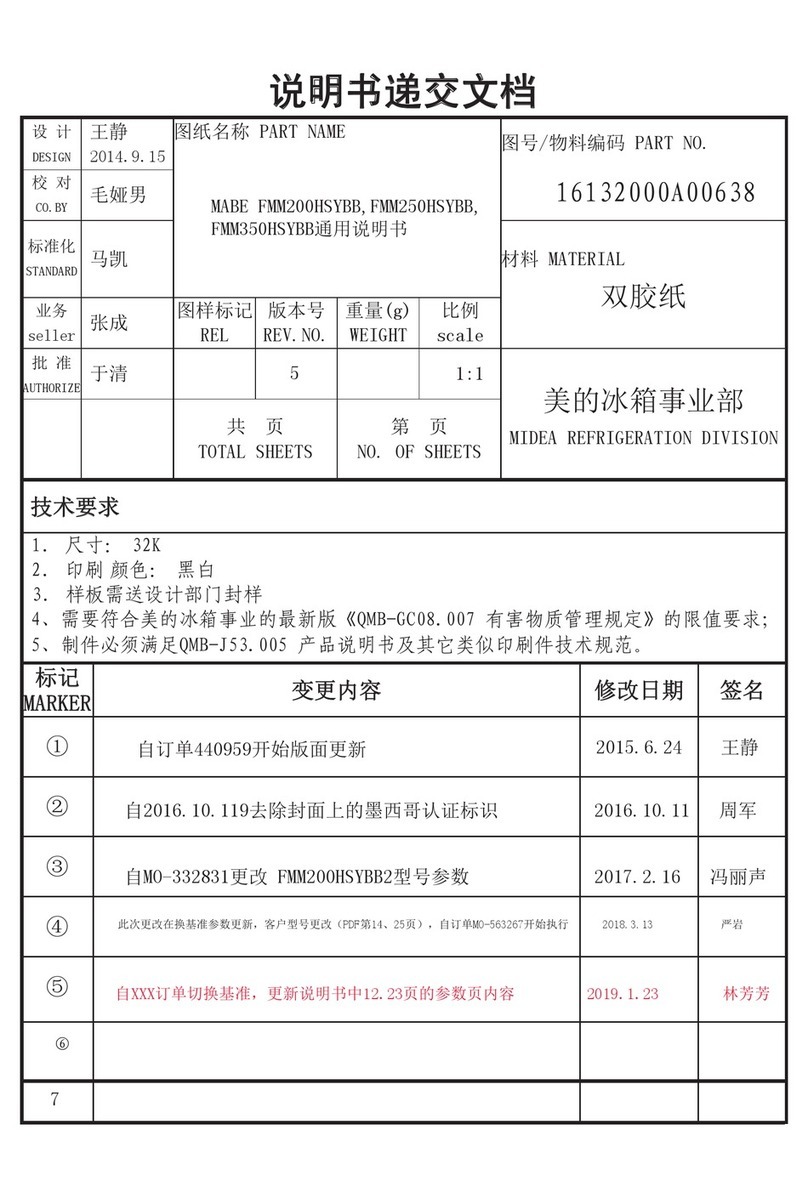
mabe
mabe FDM200HSYBB User manual
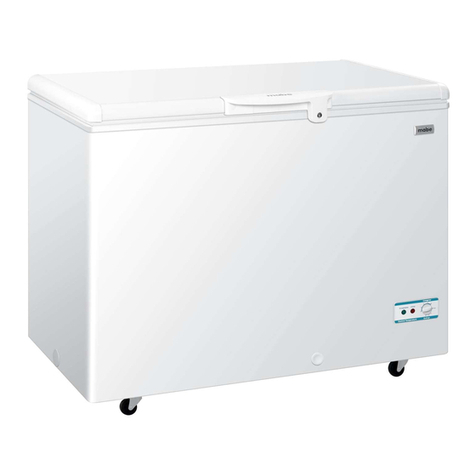
mabe
mabe FMM300HEWWX1 User manual
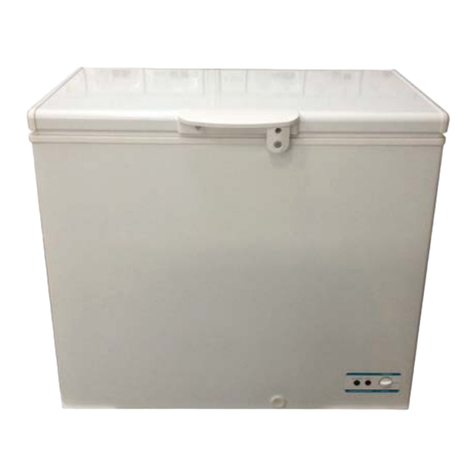
mabe
mabe ALASKA520B2 User manual
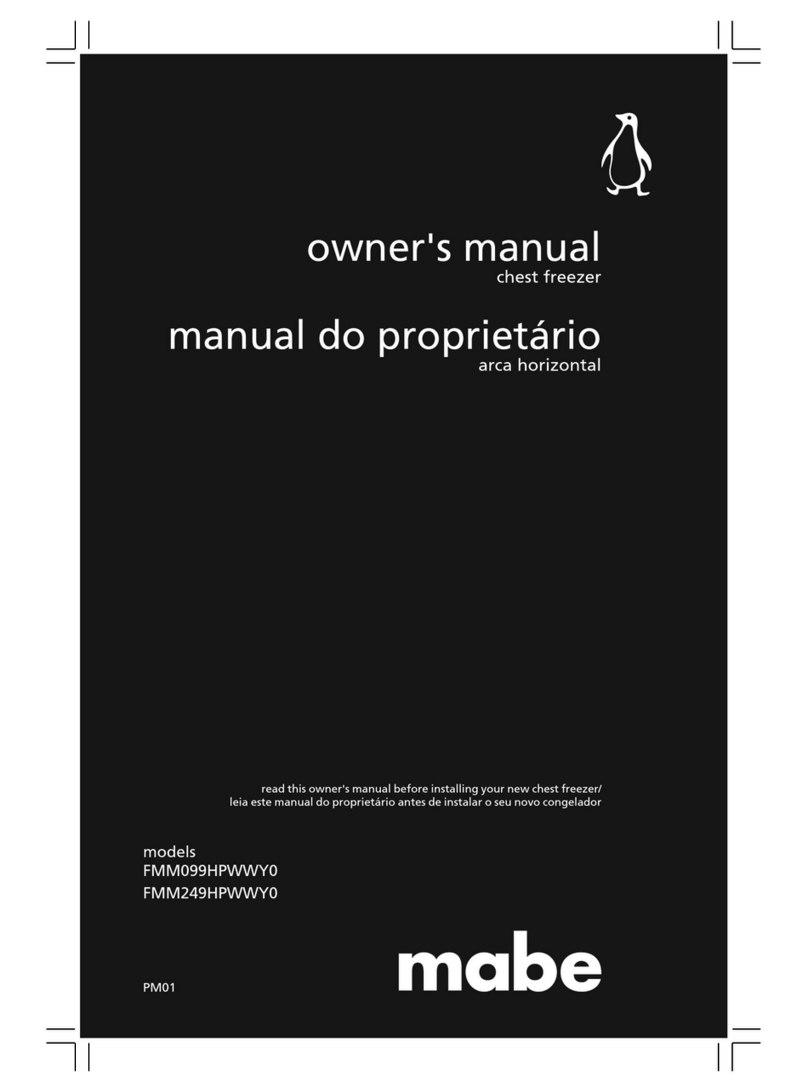
mabe
mabe FMM249HPWWY0 User manual
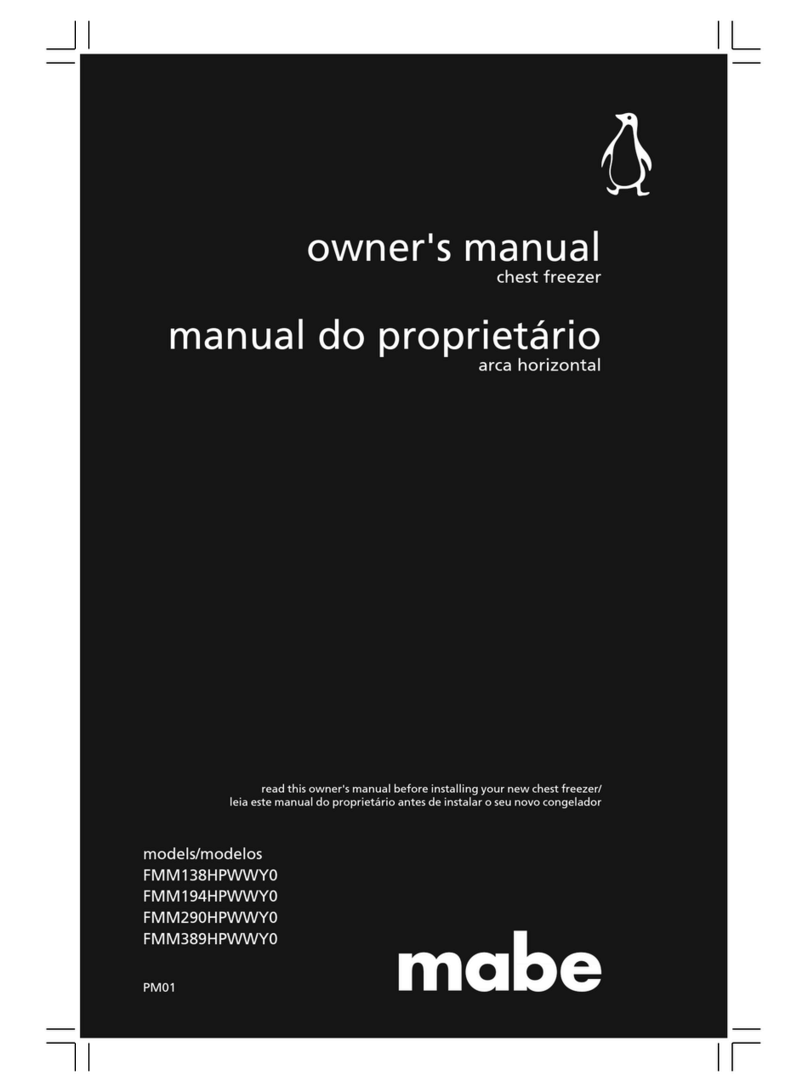
mabe
mabe FMM138HPWWY0 User manual
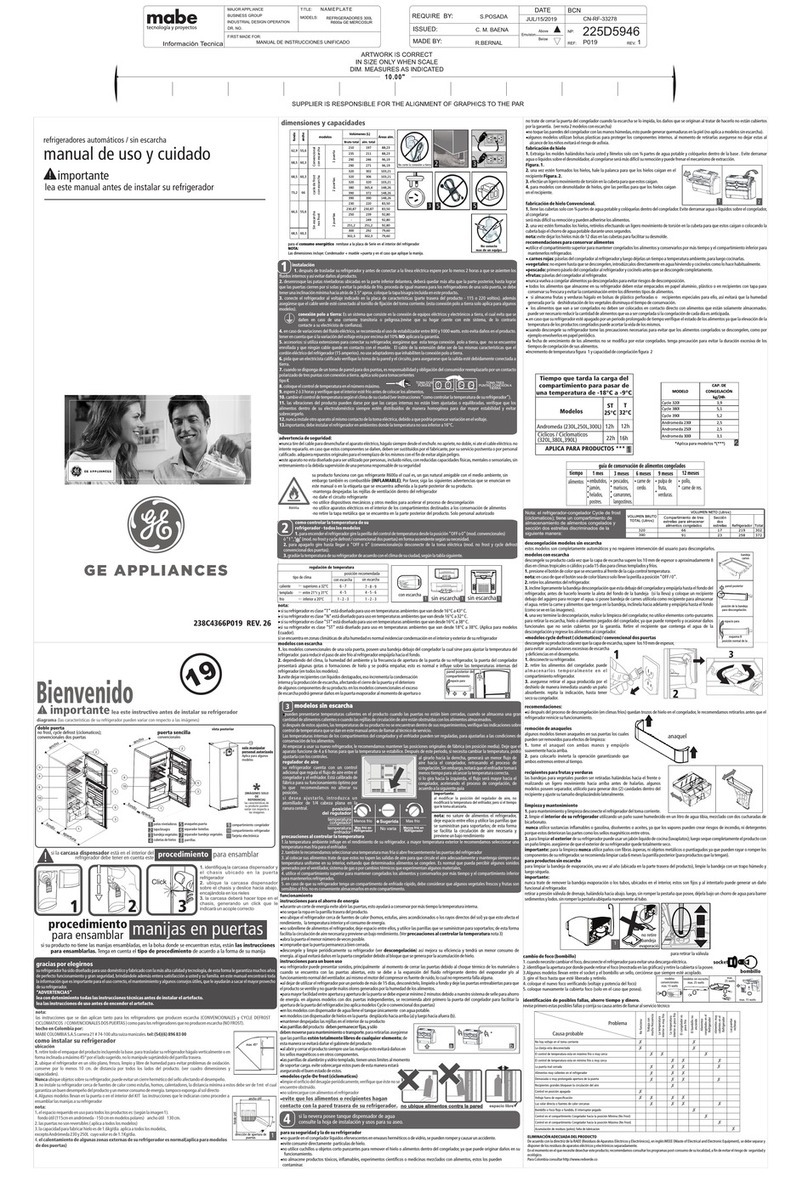
mabe
mabe Cycle 320l User manual
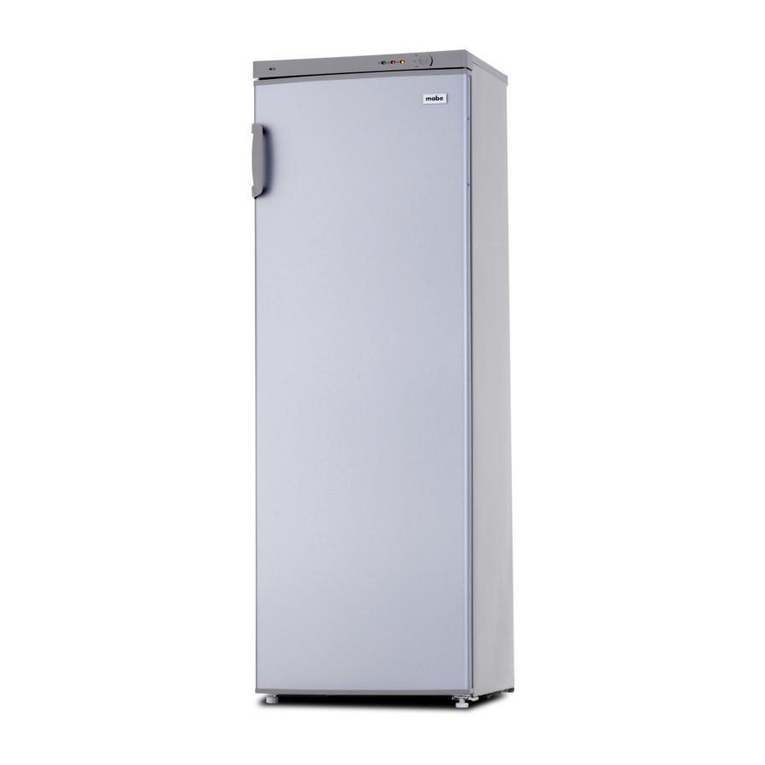
mabe
mabe FMM200UESX0 User manual
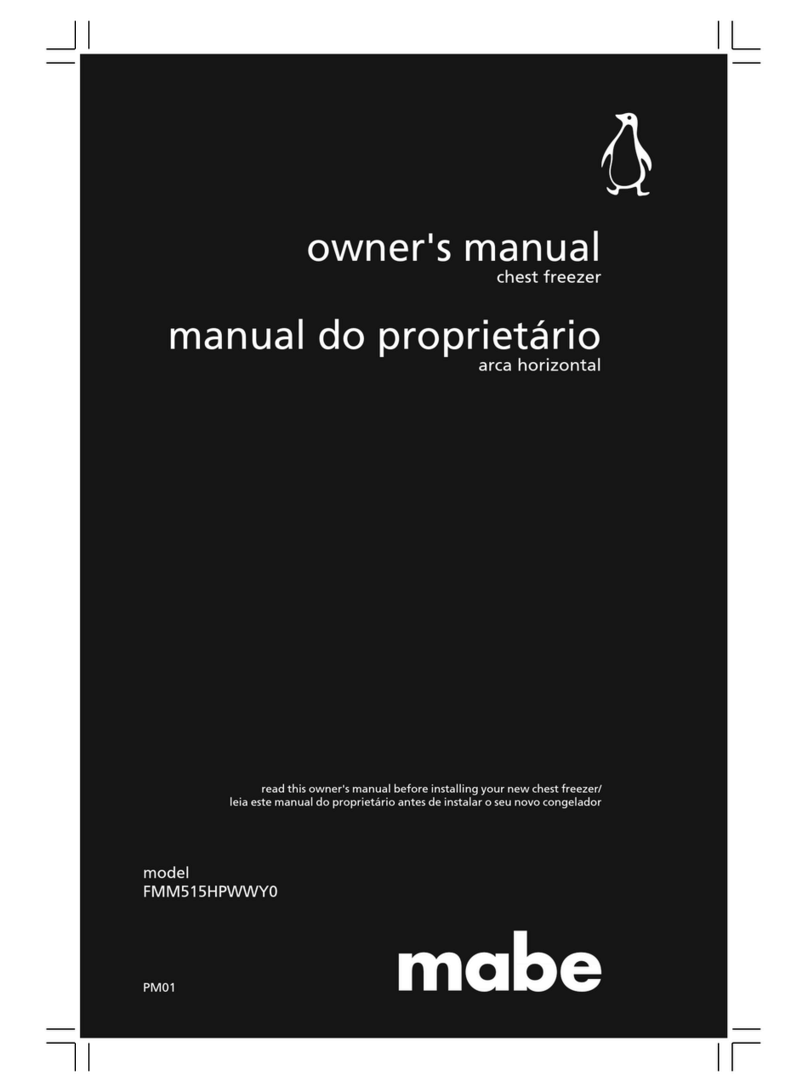
mabe
mabe FMM515HPWWY0 User manual

mabe
mabe FMM140HEWWXR User manual
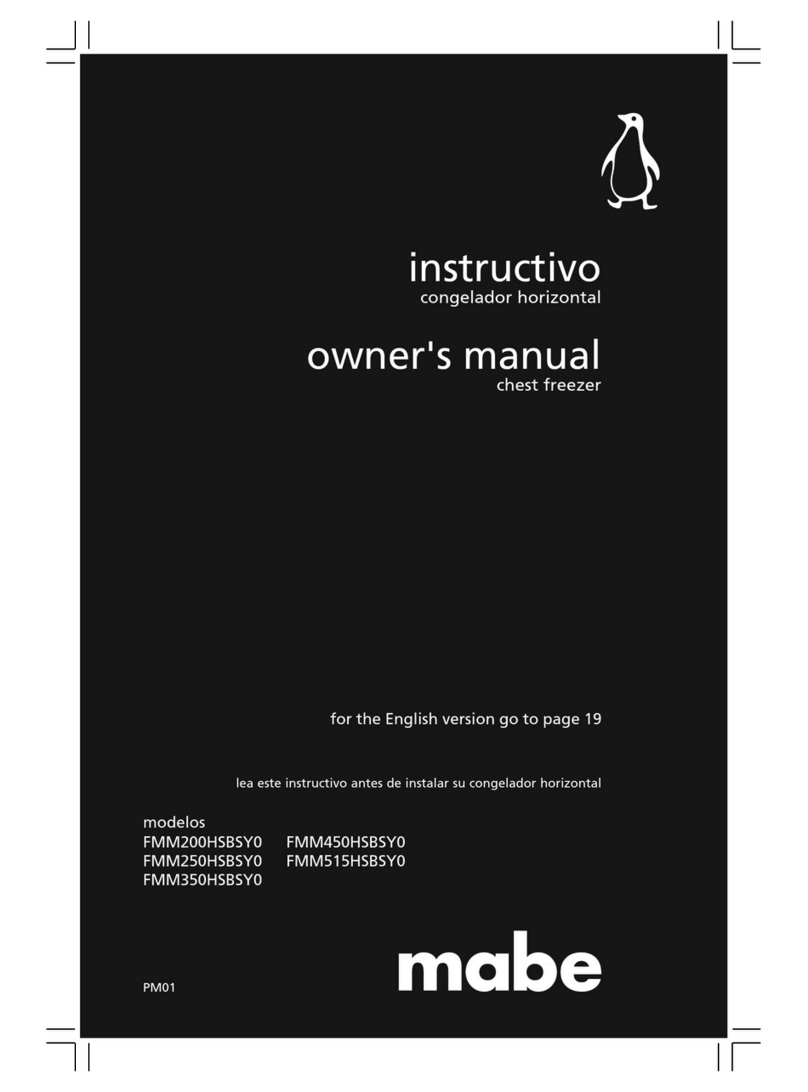
mabe
mabe FMM200HSBSY0 User manual
